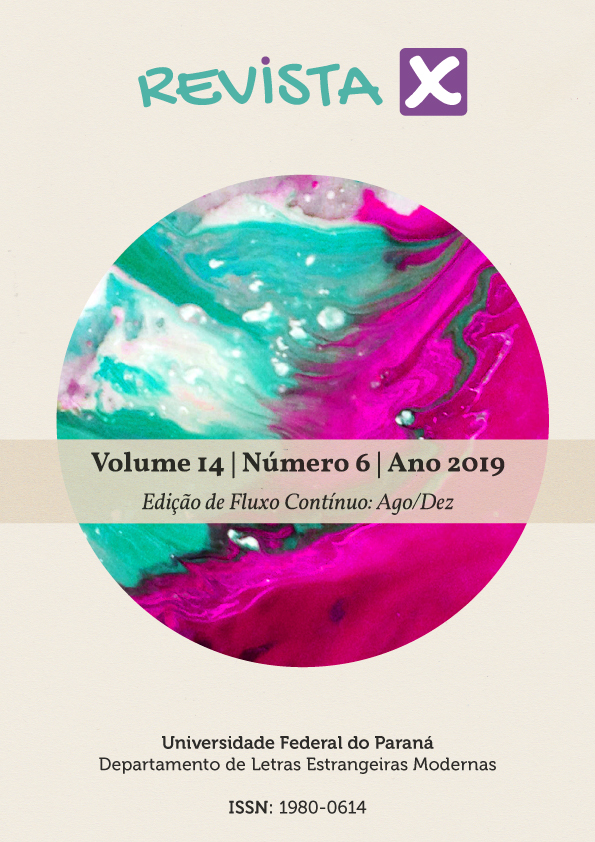LITERATURE AS TIME TRAVEL: ANNOTATED TRANSLATION UNVEILING THE IMPLICIT HYPER-TEXT
DOI:
https://doi.org/10.5380/rvx.v14i6.69109Resumen
The purpose of this article is to discuss the choice for footnotes during literary translation, as an endeavour to re-establish a connection between readers and the story through the references that are made – and which, otherwise, would possibly be lost. More specifically, I herein reflect upon the references provided by the characters of Sunshine sketches of a little town (LEACOCK, 1912), which prove to be pivotal for the affectionate characterisation of Mariposa as a construct of a particular cultural-historical setting. The acknowledgment of hyper-textuality as inherent to the literary experience evinces that translation can operate not as to provide the text with a surface of absolute transparency, but, on the contrary, it has to do with giving a literary piece one more layer of mobile meanings. My findings point to the direction of these unavoidable systems of mobile meanings, and translation might give us the tools to become less colour blind towards the specificity of the other who moves. I want my readers to see in Mariposa, this ever-changing but never-dying town where Leacock’s (1912) novel is set, other stories emerging, with new characters who are (re)born through their translation recreation.
Descargas
Publicado
Cómo citar
Número
Sección
Licencia
Los autores conservan el copyright de todos los trabajos publicados por la Revista X.
La revista publica artículos bajo licenciamiento (Creative Commons — Atribución 4.0 Internacional — CC BY 4.0 License).
Por la presente se autoriza la distribución no exclusiva de documentos en línea en repositorios institucionales y pre-print.
El estilo de los autores se mantendrá después de las correcciones regulatorias, ortográficas, gramaticales y de diseño realizadas durante el proceso editorial.




